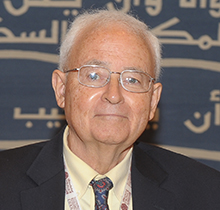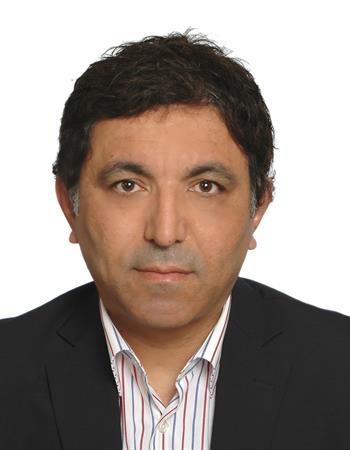In a nutshell
The costs of handling growing refugee populations are rapidly becoming unsustainable, increasing the scope for further conflict.
As the conflict in Syria continues, fewer refugees say that they expect to return home, raising the costs of preparing them for long-term stays.
The faster and lower cost way of dealing with the continuing conflict in Syria is to intervene directly to stop the war.
With over 65 million people displaced by conflicts around the world, we worry that people may be becoming complacent about the continuing rise of these mostly man-made disasters. The fact that natural disasters associated with global warming and earthquake shocks seem to be happening at greater frequency and with greater severity should at least partly shake us out of that complacency. But, if the high and rising costs of handling growing refugee populations, especially for countries near these conflicts and natural disasters, are appropriately recognised, this should make us realize that these costs are rapidly becoming unsustainable. Moreover, as these costs grow and involve growing numbers of countries they can continue to undermine stability and increase the scope for further conflict. We suggest that the world as a whole and especially the countries of the MENA region can no longer afford simply to accept the growing costs of these wars and, as an alternative, should consider intervening to stop them.
Subsequent to the Syrian government’s crackdown on the Arab Spring movement in 2011, the conflict in Syria has contributed more refugees (nearly five million) and more internally displaced persons (over seven million) than anywhere else in the world. The conflict has spilled over substantially into neighbouring countries in MENA, such as Iraq and Lebanon, which have not long ago experienced their own civil wars, and Turkey, which has had trouble dealing with what it sees as a threat from its Kurdish minority who also extend into Iraq and Syria.
The conflict in Syria has also contributed to severe political differences among Gulf Cooperation Council countries and in their relations with Iran and of course Russia, which has deemed it imperative to intervene in a partisan way in the Syrian conflict. This has further contributed to civil war in Yemen and to its current food crisis and cholera epidemic, said to be among the greatest humanitarian crises in the world. Moreover, the Syrian conflict raises the risk of nuclear war, even if only by accident, between the European Union (EU), Russia and the United States.
As the Syrian conflict continues, broken only by ceasefires of different durations and different geographical scope, each additional year has seen worsening living conditions within the country. Indeed, life expectancy of both males and females has declined by about six years since the conflict began in 2011.
In a recently completed study (Balcilar and Nugent, 2017) that makes use of three rounds of an impressive refugee survey undertaken in Turkey by AFAD, that country’s Emergency Service agency, we find that two thirds of the almost five million Syrian refugees in Turkey report that they would have no shelter if they were to return home. Many say that they have lost at least one family member in the conflict and quite a few have been forced to flee with only their clothing on their backs and suffered more trauma in trying to reach the Turkish border.
Needless to say, the presence of so many refugees in Turkey imposes huge and growing costs, not only on the refugees themselves but also on the host population and on the EU and United Nations, which are contributing most to paying these costs. As far as the costs to the host countries are concerned, per capita these costs are especially large in the smaller countries hosting Syrian refugees, such as Jordan and Lebanon, both of which even before the refugees were suffering from very high unemployment rates.
Our study also shows that, as time goes on and strife in Syria continues, fewer Syrian refugees indicate that they will expect to return home. As that perspective becomes more widespread, the annual costs of preparing the refugees for long-term stays in these countries or elsewhere in Europe and beyond, currently estimated to be over US$35 billion (World Bank, 2016), will be rising rapidly.
In addition, and especially in the last couple of years, the continuing fighting and air strikes in Syria and neighbouring Iraq have destroyed some architecturally important historic, religious and cultural sites, which otherwise could and should have been preserved for the world as a whole.
The monetary and social costs of handling the refugees by no means stop there. Rising costs have led several European and other countries to refuse to accept their previously allotted shares of the refugees, even threatening the very existence of the EU itself. The costs of handling the Syriam refugees in Europe or America, moreover, are estimated to be over ten times the costs of handling them in neighboring countries.
Given the high and rising costs of at least trying to manage the refugees and internally displaced persons in Syria, it would seem increasingly likely that, as difficult as it might be, the faster and lower cost way of dealing with the continuing conflict in Syria and beyond is for the countries of the region and the international community to intervene directly to stop the war, promote reconstruction and establish one or more viable interim governments, either in Syria as a whole or in its different regions.
It would be presumptuous of us even to begin to make suggestions about how this should be done. But, given its importance to the countries of the region, and the rapidly growing costs of letting the conflict persist, it would seem imperative that the countries of the region and hopefully with ERF and UN support should play a substantial role in finding the best way to do this and to do so without further delay.
Further reading
Balcilar, Mehmet and Jeffrey Nugent (2017) ‘Migration of Fear: An Analysis of Migration Choices of Syrian Refugees’, presented at the American Economic Association, Middle East Economic Association and Western Economic Association meetings in 2017.
World Bank (2016) ‘MENA Quarterly Economic Brief, January 2016: The Economic Effects of War and Peace’.



